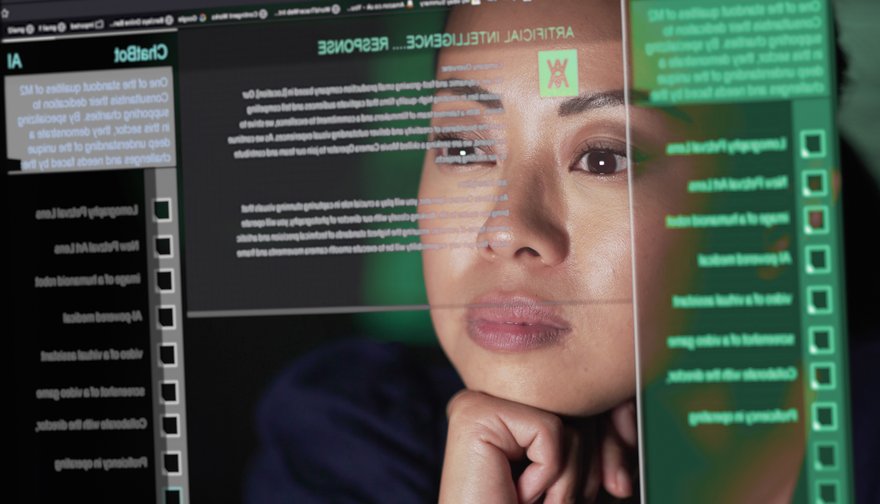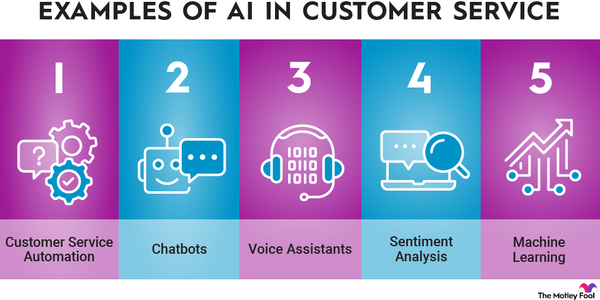Perplexity is an artificial intelligence (AI) chatbot specializing in research and has positioned itself as an alternative to traditional search engines. Like ChatGPT and other AI chatbots, Perplexity uses a conversational interface and can personalize its answers as it learns your interests and preferences.

Like much of the rest of the AI industry, Perplexity has attracted attention from investors, and the company was valued at $520 million as of its most recent funding round in March 2024. In this deep dive into Perplexity AI, we'll discuss whether the stock is publicly traded or will have an initial public offering (IPO), how to buy it, its profitability, whether you should invest in it, and other common questions.
IPO
Publicly traded?
Is Perplexity publicly traded?
Perplexity is not currently publicly traded. The company is still very young, founded in August 2022 by Andy Konwinski, Denis Yarats, Johnny Ho, and Aravind Srinivas.
Srinivas previously worked at OpenAI, the company generally considered the leader in generative AI, and is now Perplexity's CEO. So far, Perplexity has had three funding rounds, although it typically takes several years for even the most promising companies to go from founding to publicly traded.
Generative AI
When will it IPO?
When will Perplexity IPO?
There have been no reports of Perplexity's plans to go public. According to some media sources, the company could soon raise funding in a round that would value it at $1 billion, making it a unicorn, the term used for start-ups worth $1 billion or more.
Since Perplexity was founded in just 2022, it could take at least a few more years for the company to go public, even if everything goes right for it. With the exception of the dot-com era, when new companies were racing to go public to capitalize on insatiable investor demand for internet companies, even the brightest tech IPOs have taken several years to materialize.
Alphabet (GOOG -2.98%)(GOOGL -3.02%), formerly known as Google, took six years to go from its 1998 founding to its 2004 IPO, while Meta Platforms (META -2.68%), then known as Facebook, took eight years to go public from its 2004 founding. If Perplexity follows in their footsteps, we wouldn't expect to see an IPO until 2028 at the earliest.
After the wave of dot-com busts, investors tend to be more cautious with IPOs and will want to see a track record of growth and profitability, in addition to evidence that the AI boom is sustainable. It's likely to take at least a few more years for Perplexity to be able to deliver convincing evidence around those expectations.
How to buy
How to buy Perplexity stock
Since Perplexity isn't publicly traded, you can't buy the stock directly. However, there are ways for investors to get exposure. You could invest through a venture capital firm or buy shares by funding employee stock purchases. However, those options are typically available only to accredited investors with substantial net worth. An easier way is to invest in stocks that own shares of Perplexity.
Step 1: Open a brokerage account
To invest in a stock that holds shares of Perplexity, you'll have to open a brokerage account that allows you to buy and sell stocks. There are a lot of different options for opening a brokerage account, including Charles Schwab (SCHW -0.23%), Fidelity, Robinhood (HOOD -1.93%), and E-Trade, among others.
Brokerage Account
Step 2: Figure out your budget
Once you have a brokerage account, the next step is determining how much you can spend. This should be based on your income, your total assets, and your opinion on the investment. The more confident you are in the investment, the more of your portfolio you should allocate toward it.
As an investor, it's important to maintain a diversified portfolio. A good rule of thumb is to not invest more than 10% of your total holdings into one stock.
Step 3: Do your research
Next, you'll want to do your research so you understand your investment, its strengths and weaknesses, and its risks. It's a good idea to write out your investment thesis, including what would make you change it or the circumstances in which you'd buy the stock.
Right now, only one publicly traded company owns shares of Perplexity, and that's Nvidia (NVDA -0.21%). With Nvidia's market cap topping $2 trillion and its stake in Perplexity likely worth only a few million dollars, investors should be aware that they would be getting very limited exposure to Perplexity by investing in Nvidia.
Market Capitalization
Even so, an investment in Nvidia could make sense because Nvidia is the clear leader in AI hardware, and a partnership with Perplexity would only make Nvidia stronger. It's also possible that Nvidia could try to acquire Perplexity.
Step 4: Place an order
Finally, once you've opened a brokerage account, decided how much you're willing to spend, and done your research, you need to place an order. There are primarily two types of stock orders: market orders and limit orders.
With a market order, you pay the current market price based on the bid-ask spread. Using a limit order, you can choose the maximum share price, giving you more control over what you pay. Similarly, if you use a limit order to sell a stock, you can choose your minimum selling price.
The advantage of a limit order is the added control over the price, while the benefit of a market order is that it is usually filled almost immediately. The Motley Fool generally recommends a market order.
Profitability
Is Perplexity profitable?
Perplexity is only 20 months old and just starting to earn revenue. As of January 2024, it was unprofitable, making less than $10 million in revenue annually. Tech companies are known for investing in growth in early stages to maximize their market share before focusing on profit later, and Perplexity is likely to follow the same path.
Perplexity is trying to disrupt Google in search, meaning it's chasing a massive addressable market. The company will likely continue investing in improving its product, getting the necessary computing infrastructure to grow the business, and marketing the product to grow its customer base and spread positive word-of-mouth. Profitability is not a priority right now.
Should I invest?
Should I invest in Perplexity?
Perplexity is such a young company that it's difficult to evaluate it on financials. For instance, generating less than $10 million in revenue annually right now means its financial numbers are essentially meaningless in relation to its valuation. Investors should evaluate the company based on its growth potential and its likelihood of capturing the market opportunity in front of it.
According to BrightEdge, a leader in AI search marketing, Perplexity is seeing its share of organic search grow 39% monthly, meaning it's growing by several hundred percent annually. Perplexity also said in January that it has 10 million monthly active users, although only a small fraction are paid users.
One sign that investing in Perplexity could be a smart move is the list of people who have already invested in the start-up. Those include tech industry bigwigs like Amazon (AMZN 0.76%) founder Jeff Bezos, Shopify (SHOP 0.55%) CEO Tobi Lutke, and former YouTube CEO Susan Wojcicki, among others.

That alone doesn't necessarily make investing in Perplexity a good idea. However, it helps to have the backing of people like Bezos and Lutke and is a clear sign of Perplexity's desirability.
Ultimately, investing in Perplexity is very risky since the company is still tiny and there's no guarantee it will be a success. Still, if you have a chance to invest in Perplexity, it's worth investing a small amount since the company has a ton of upside potential.
ETF options
ETFs with exposure to Perplexity
There are no exchange-traded funds (ETFs) with direct exposure to Perplexity because Perplexity isn't publicly traded. However, because Nvidia is an investor in Perplexity, you can get indirect exposure by investing in one of the numerous ETFs that hold Nvidia.
You could invest in a basic index fund, like the Vanguard 500 Fund (VOO 0.33%) or the Invesco QQQ Trust (QQQ 0.35%), to gain exposure to Nvidia. You also could choose something more focused, such as the Van Eck Semiconductor ETF (SMH 0.25%), which will give you more exposure to Nvidia and, by extension, Perplexity.
Although buying an ETF like this will technically give you some exposure to Perplexity, it will be minimal due to the company's small size. You could also consider buying an AI ETF, which will offer exposure to AI stocks, such as Nvidia, although not to privately held companies like Perplexity.
Related investing topics
The bottom line on Perplexity
Perplexity is one of the more exciting AI start-ups operating today. While it might not have the name recognition or user base of ChatGPT or even Google's Gemini, Perplexity is the leader in a unique and valuable niche in AI chat, and the company has tremendous potential if it can convince internet users that it's a better alternative to Google Search.
For prospective investors, Perplexity is unlikely to go public anytime soon since the company is still young and in its development stage, based on its current revenue. However, the company is worth watching because of its disruptive potential and the list of elite investors it has attracted, showing that tech's top minds are betting on Perplexity.
FAQ
Investing in Perplexity FAQ
Can I buy Perplexity AI stock?
Perplexity AI isn't currently publicly traded, so you can't buy the stock. For indirect exposure, you can invest in Nvidia, which owns shares of Perplexity.
Is Perplexity traded on the stock market?
Perplexity is not traded on the stock market. It's not a publicly traded company and has not had an IPO. It was founded in August 2022 and will likely remain private for at least the next few years.
Who are the investors in Perplexity?
A number of top tech leaders have invested in Perplexity, including Jeff Bezos, Tobi Lutke, and former YouTube CEO Susan Wojcicki. It's also received investments from tech companies like Nvidia and Databricks.
How do I buy stock in AI?
There are many options for investing in AI. Perhaps one of the easiest is to buy semiconductor stocks like Nvidia that are supplying cloud infrastructure companies and start-ups with the chips necessary to run AI programs. There aren't really any pure-play AI stocks, but semiconductor stocks offer an opportunity to get exposure to AI, often at a reasonable price.
































































































































































































































